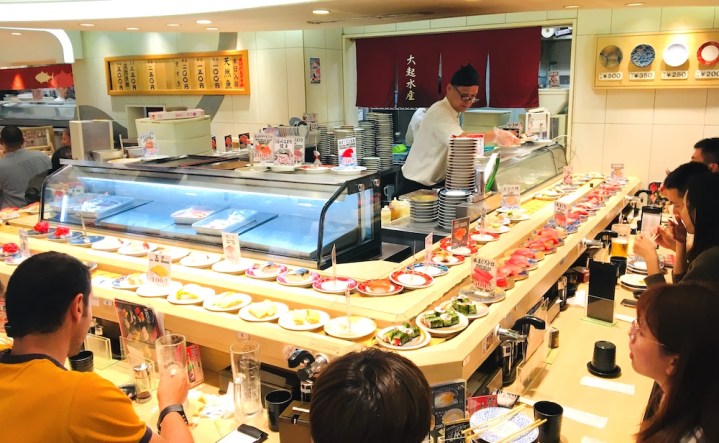
Sushi fans in Japan were appalled last month when several videos emerged showing people performing vile acts such as putting their saliva on menu items at a conveyor-belt restaurant, leaving them for other unsuspecting diners to eat.
Apparently performed as stunts by a tiny number of attention-seeking social media users, the dangerous act has been dubbed “sushi terrorism.”
Now restaurants in the industry are scrambling to reassure customers that they’re doing all they can to ensure their food is safe to eat.
One chain, Kura Sushi, is planning to deploy cameras using artificial intelligence (AI) to scan diners for suspicious behavior, the Yomiuri Shimbun reported on Tuesday.
At the current time, Kura Sushi’s sushi plates appear on the conveyor belt with a cover, as this video shows. As you take the plate, the cover flips up and then back down again once a diner has fully removed the selected item. At the end of 2021, Kura Sushi started using AI cameras to monitor the opening and closing of the covers in an exercise aimed at counting plate usage.
Now the company says it’s going to update the camera system so that it will also be able to detect suspicious behavior, such as a cover being repeatedly opened and closed. “The head office will contact the chain store if it determines that there is a possibility of unwelcome behavior, and staff at the store will talk to the customer or report the incident to police,” the Yomiuri said.
Since last week, the industry’s largest sushi chain, Akindo Sushiro Co., has begun an order-only service to ensure items remain on the belt for the shortest time possible. It was at Sushiro that a customer videoed himself dabbing saliva onto sushi as it passed by on the belt.
Another chain, Kappa Sushi, is increasing security camera checks and has told its staff to be on the lookout for customers interfering with menu items.
Japan’s first sushi restaurant to deploy a conveyor belt opened in Osaka in 1958, though the design really took off when it appeared at the Osaka World Expo in 1970.
Many of today’s restaurants send the sushi out without a cover, but in light of recent events, this seems certain to change. Indeed, some fear the acts of so-called sushi terrorism have put the very existence of the conveyor-belt format at risk.
Editors' Recommendations
- 8 AI chatbots you should use instead of ChatGPT
- ChatGPT AI chatbot can now be used without an account
- Copilot: how to use Microsoft’s own version of ChatGPT
- Is ChatGPT safe? Here are the risks to consider before using it
- Reddit seals $60M deal with Google to boost AI tools, report claims


